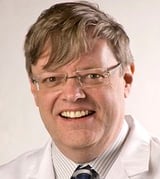
The viscosity of blood influences at least three variables: its propensity to clot, perfuse tissue, and vascular resistance. An abnormally high blood viscosity can be an indicator of underlying health issues and a predictor of adverse events such as the following:
 Dr. Gregory Sloop is Associate Professor of Pathology at Idaho College of Osteopathic Medicine and author/editor of Blood Viscosity; Its Role in Cardiovascular Pathophysiology and Hematology (Nova Biomedical, 2017) and 53 peer-reviewed publications on PubMed. He is former Chairman of Pathology and Laboratory Director at Benefits Hospitals, Great Falls, Montana, and Associate Professor of Pathology at Louisiana State University School of Medicine in New Orleans. He enjoys living with six cats, two of whom are blind, is a mad scientist in the kitchen, and understands the importance of blood viscosity.
Dr. Gregory Sloop is Associate Professor of Pathology at Idaho College of Osteopathic Medicine and author/editor of Blood Viscosity; Its Role in Cardiovascular Pathophysiology and Hematology (Nova Biomedical, 2017) and 53 peer-reviewed publications on PubMed. He is former Chairman of Pathology and Laboratory Director at Benefits Hospitals, Great Falls, Montana, and Associate Professor of Pathology at Louisiana State University School of Medicine in New Orleans. He enjoys living with six cats, two of whom are blind, is a mad scientist in the kitchen, and understands the importance of blood viscosity.
Viscosity of often referred to as the thickness of a fluid. You can think of water (low viscosity) and honey (high viscosity). However, this definition can be confusing when we are looking at fluids with different densities.
At a molecular level, viscosity is a result the interaction between the different molecules in a fluid.This can be also understood as friction between the molecules in the fluid. Just like in the case of friction between moving solids, viscosity will determine the energy required to make a fluid flow.
https://www.rheosense.com/what-is-viscosity
We recommend a minimum of three different shear rates when analyzing your samples to determine whether they are Newtonian or non-Newtonian. Separately, the shear rates should have a wide range. The reason for the wide range is because many are complex. Sometimes, your sample will not show shear thinning or shear thickening behavior at low shear rates but will at high shear rates.
Overall, there is just a lot to your sample that you may not know about until you actually test it. As a result, we recommend testing as much of a range as possible to ensure full knowledge of how your sample behaves.
When it comes to your injections, the best way to design your experiments is by focusing on the injection rate that your sample will be exposed to when going from the syringe into a patient. Testing with those numbers in mind will help give you confidence and know what is the unknown.
RheoSense, Inc. is a company in California who manufacturers and supports easy to use, small sample viscometers.